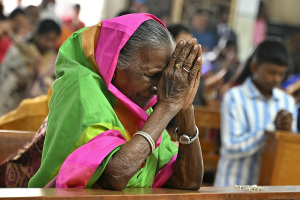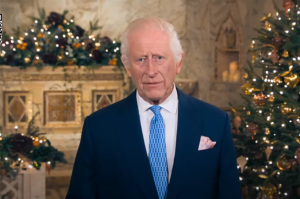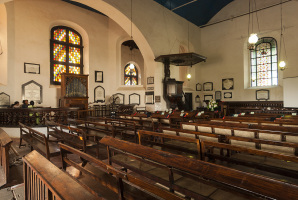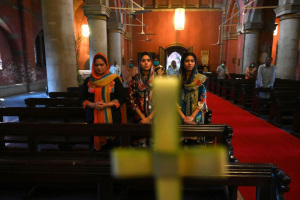Travel: Postcard from Fargo
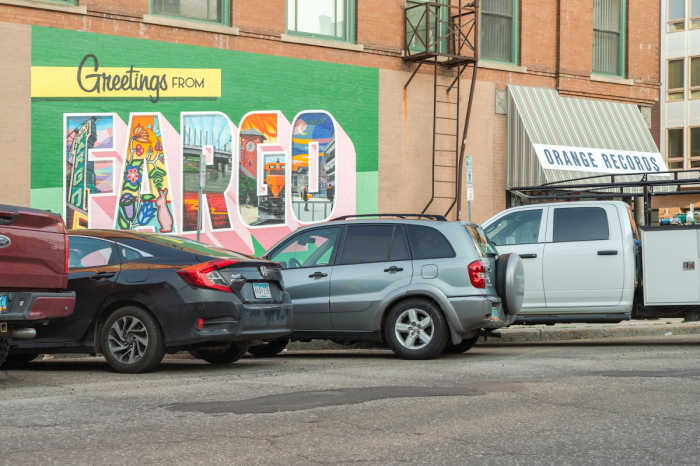
Forget what you think you know about Fargo.
With its population of 125,990 souls, the largest city in North Dakota is known, assuming it’s known at all, for the 1996 movie of the same name.
Having only vague recollections of the film, I didn’t have any preconceived impressions before my visit earlier this month. What little I did know about Fargo caused me to ponder whether the city and surrounding state were culturally and geographically in the Midwest or Great Plains.
After flying into Fargo’s airport and picking up a rental car I went to get a lay of the land.
Downtown is a couple blocks off the left bank of the Red River, which flows due north into the Canadian province of Manitoba.
Looking past some hideous parking garages from the 1960s and 1970s and the 18-story Radisson Blu — one of those typical oversized convention center hotels — the cityscape consists mostly of brick low-rise buildings with their ubiquitous alleyways. Landmarks include St. Mary’s Cathedral, an otherwise unremarkable Roman Catholic cathedral, and First Lutheran with its imposing brick Gothic revival tower.
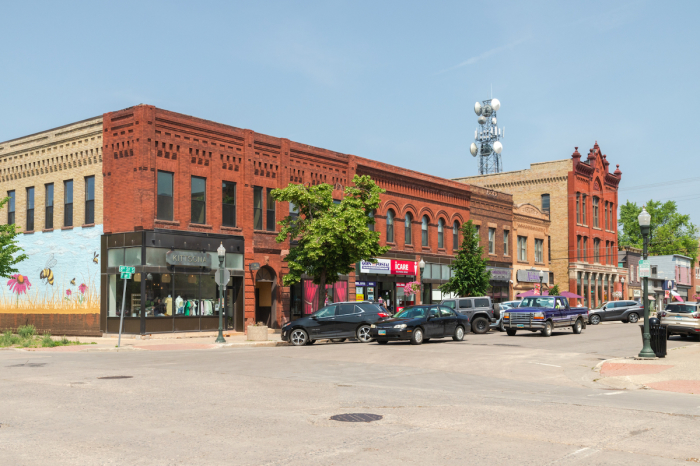
Lining either side of Broadway, which functions as the main drag, are assorted shops and eateries. Besides public art along sidewalks, many buildings feature colorful murals.
Anchoring this part of downtown is the Jasper Hotel, which has the kind of design-focused interior that you expect from a boutique hotel in a much bigger city. Think Chicago or Denver, but definitely not Fargo.
Across the Red, a natural boundary separating the states of North Dakota and Minnesota is significantly smaller Moorhead (population 44,505).
While Fargo’s twin is a city in its own right — it is, after all, in a completely different state — the two cities essentially function as one community. So much so that I didn’t notice a sign indicating that I had left one city for another or crossed state lines after driving through one of those confusing European-inspired multi-lane roundabouts.
In the aptly named Viking Ship Park is a striking and rather unusual church.
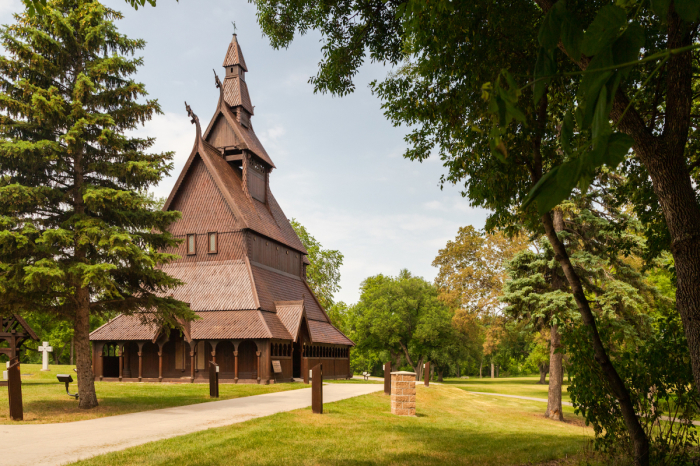
The wooden church is a full-scale replica of Norway’s Hopperstad Stave Church, a so-called stave church from the early 12th century. These kinds of churches — the name stave refers to a method of construction — were common nearly a thousand years ago across a swath of northern Europe. Today, just 28 original stave churches remain.
Built in the late 1990s, the replica functions as a monument to the significant Norwegian cultural heritage of Fargo-Moorhead. It is part of the Hjemkomst Center, which also consists of a small but interesting museum. Among the collection is a replica Viking ship that sailed to Norway in the early 1980s.
Back in Fargo, I really liked Brewhalla.
The newish food hall, a project of the Drekker Brewing Co., features a small but superb offering of food and drink stalls that reminded me of Milwaukee’s Public Market and Time Out Market in Lisbon. There are even limited-service hotel rooms on upper floors. Like so much else in Fargo, Brewhalla’s lively vibe makes this city in North Dakota a great place to spend a weekend.
If you go
Be sure to also visit the Plains Art Museum, Rourke Art Museum and the open-air Bonanzaville for a glimpse of life when Fargo was a gateway to the Old West. Consider going to a baseball game and cheering on the RedHawks, the local minor league team.
I stayed at the Holiday Inn because I normally enjoy the consistency of a chain hotel. In hindsight, I should have booked a room at the Jasper Hotel.
Eat dinner at Mezzaluna, Crave and Rosewild inside the Jasper. For lunch or something more casual try Nichole's Fine Pastry & Cafe.
Hector International Airport is served by Allegiant and Frontier as well as American, Delta and United or their regional carriers. By car, Fargo is a little less than four hours from Minneapolis.
Dennis Lennox writes a travel column for The Christian Post.
Dennis Lennox writes about travel, politics and religious affairs. He has been published in the Financial Times, Independent, The Detroit News, Toronto Sun and other publications. Follow @dennislennox on Twitter.

















